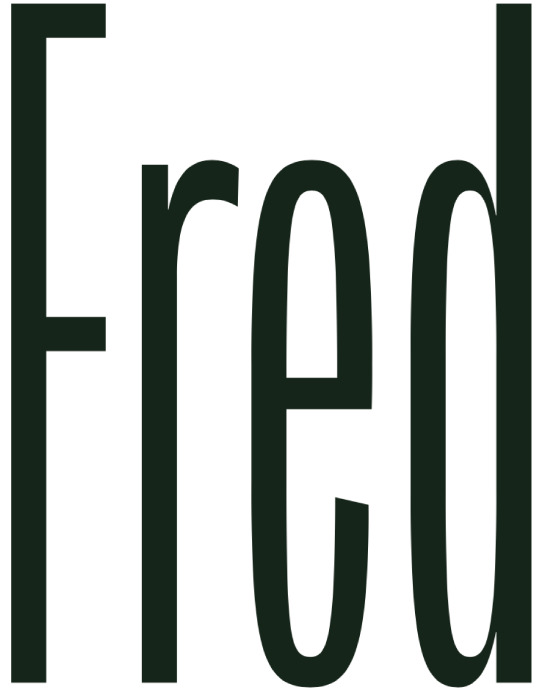#Arc Global Investments II
Text
Digital World Acquisition Corp., the blank-check company looking to take Trump Media and Technology Group public, has changed its listed address to a UPS Store in Miami.
The change from a Miami office building to a UPS address came with DWAC's regulatory filing on Friday disclosing that some investors pulled out tens of millions of dollars.
The company said it had lost $138.5 million of the $1 billion in financing from private investors in public equity, also known as PIPE, to fund Trump Media after the merger. The contractual obligation for those investors to contribute to former President Donald Trump's media company after the deal had expired last Tuesday, allowing them to pull their funding.
One of the former private investors told CNBC that it pulled financing from DWAC because of the many legal obstacles facing the company. The investor, who declined to be named due to the sensitive nature of the matter, was also underwhelmed by the popularity of Trump Media's Truth Social app as measured by Donald Trump's follower counts.
Trump had more than 80 million followers on Twitter. On Truth Social, which he founded after he was banned from Twitter following the Jan. 6, 2021, Capitol insurrection, he has 4.1 million. The app is also currently barred from the Google Play store.
Representatives from DWAC did not immediately respond to a request for comment.
After DWAC failed to garner enough shareholder support to extend its deal deadline earlier this month, CEO Patrick Orlando contributed $2.8 million from his company Arc Global Investments II to push back the deadline to December.
The merger delay comes as Trump Media and DWAC are the subject of a Securities and Exchange Commission probe into whether alleged discussions between the two companies prior to the merger violated securities laws.
Trump himself is also the subject of multiple investigations, including civil allegations of fraud from New York's attorney general, as well as criminal investigations relating to the removal of sensitive documents from the White House, his involvement in the Jan. 6 Capitol insurrection and attempts to influence the outcome of the 2020 presidential election.
DWAC's address change was first reported by the Financial Times.
Shares of DWAC were trading around $17 after hours Monday, down significantly from their $97 peak in March of this year.
#us politics#news#cnbc#digital world acquisition corp#Trump Media and Technology Group#donald trump#ups#Patrick Orlando#truth social#Arc Global Investments II#Securities and Exchange Commission#financial times
37 notes
·
View notes
Text
James T. Flynn-Former VOYA Broker-More Than $19 Million Paid Out to Disgruntled Former Clients-Greenville, SC
James Travis Flynn Investigation
May 2023-Greer , SC/ Greenville, SC
Over the past 4 years we have successfully obtained significant damages for several dozen former customers of James Travis Flynn, a former financial advisor with VOYA Financial.
We are still receiving inquiries from victims of Flynn and are currently pursuing VOYA on their behalf.
The claims by his former customers allege that…
View On WordPress
#ARC Global Trust (Global Net Lease)#ARC Hospitality Trust#ARC Trust III. ATEL 14 LLC#ashley woodard#BDCA#Capital Investment Group#CIG#Colony Northstar#exploitation of seniors#finra arbitration attorney#Flynn Insurance Group and Flynn Wealth Management#FS Energy#Healthcare Trust of America#James T. Flynn#Jim Flynn#Jim Flynn investigation#Northstar Healthcare#Phillips Edison Grocery Center REIT#Phillips Edison Grocery REIT II#recover investment losses#recover REIT losses#securities attorney#Steadfast Apartment REIT#stockbroker malpractice#Voya Financial Advisors complaint#Voya Financial Advisors problem
0 notes
Text
A board member of Trump Media & Technology Group, which owns Truth Social, has been accused of hacking one of the executives who helped bring the firm public as part of a corporate coup attempt, according to a lawsuit filed in the Southern District of Florida.
Trump Media became a publicly traded company last month when it merged with Digital World Acquisition Corp (DWAC), a special purpose acquisition company. DWAC was first led by Patrick Orlando, one of the original architects of the deal to take Truth Social public. Orlando was fired in March 2023, after that deal was delayed, and replaced immediately by Eric Swider. That ouster is the focus of the lawsuit, which was filed in March of this year by a company Orlando controls called Benessere Investment Group.
In its lawsuit, Benessere claims that Swider, who served as DWAC CEO from March 2023 to March 2024 and currently sits on Trump Media’s board of directors, plotted a “coup d'état” in order to oust Orlando as the CEO of DWAC. Benessere alleges that “defendants and other co-conspirators stole access to Plaintiffs’ computer systems and files and used the stolen information to attack Benessere and ARC II managing member, Patrick Orlando,” as part of an “audacious scheme to seize control of and enlarge their holdings in a publicly-traded company poised to merge with Trump Media & Technology Group Corp.” ARC II refers to ARC Global Investments II, a fund organized by Orlando which provided financing for the deal to take Truth Social public.
This lawsuit is the latest development in the legal acrimony among some original employees of the various companies associated with Truth Social, the people who have managed to stick around, and former president Donald Trump himself. Even before Trump’s Truth Social officially launched in early 2022, DWAC was beset by investigative probes, insider trading, and petty infighting. The company, which began trading publicly last month, is valued at more than $5 billion despite reporting just over $4 million in revenue in 2023. This wildly inflated valuation hangs over some of the recent lawsuits, as early employees of the company stand to make millions of dollars if they manage to hold on to their shares.
The lawsuit claims that after Orlando’s dismissal as CEO, Swider enlisted Orlando’s former personal assistant, Alexander Cano, to improperly gain access to a protected electronic storage account at Box.com tied to Benessere and ARC II that held Orlando’s confidential files, Mailchimp login information, and DocuSign accounts. Cano had access to the accounts in his capacity as Orlando’s assistant and continued to have access despite no longer being Orlando’s assistant or working at Benessere, the suit says.
“At some point during 2023, months after Cano had left Benessere, Orlando learned that he had been locked out of the Box Account and that Cano had seized total control of the Box Account as the administrator,” the suit alleges. “Cano without authorization accessed files, including, without limitation, files containing all information with regard to all investors as well as all financial and other confidential information not only of ARC II but also of Benessere.” The suit alleged that Cano then gave the “stolen information” to Swider.
Then, according to the Florida suit, Swider used Orlando’s stolen Mailchimp account credentials and listserv to send an email to ARC II investors in the Truth Social deal on March 5, attacking Orlando’s management of ARC II and DWAC, and his involvement in a separate lawsuit filed against DWAC the previous month.
“Mr. Orlando’s leadership has guided our common interests with DWAC directly into the arms of the SEC, the DOJ, lengthy delays and costly investigations,” Swider wrote. “By filing this lawsuit against DWAC, Mr. Orlando is destroying the value that may be realized upon consummation of the business combination by the Company and its members.”
Swider then invited fellow investors to join him on a series of Zoom calls to “understand our risk exposure based on leadership that continues to march us down a path of mis-information, hidden information, and self dealing.” In the same email cited in court documents, Swider added, “I am not disparaging Patrick. I am sure he is an amazing Human being, Honest, hard working. Looking out for your best interest. He is good looking. He is cool. I like him. Nothing in this email is meant to be defamatory. He has been great as a leader. Patrick- you are Awesome!!”
In the Florida lawsuit, Benessere alleges that Swider tried to take control of the two companies involved in funding the Truth Social Deal. “And to gain control of ARC II and complete his takeover of the entire DWAC enterprise, Swider sought to obtain confidential information about ARC II and its investors, which information was held by Benessere in a protected electronic storage account at Box.com,” the lawsuit alleges.
Benessere says in its lawsuit that it has paid $6,000 to a computer forensics expert to investigate the alleged hack, and that Swider and Cano haven’t relinquished access to the Box account.
Cano is also named as a defendant in the lawsuit. The suit claims that Swider “promised” Cano the role of DWAC president and “outsized” compensation following Cano’s participation in accessing Orlando’s Box account. Cano eventually did become president of DWAC. When asked for comment, Cano referred WIRED to Eric Swider.
In an interview with WIRED, Swider denied all of the allegations in the lawsuit and said that publicly available documents filed with the Securities and Exchange Commission contradict many of its claims. Swider said that he never hired Cano as his assistant and that Orlando had voted in favor of the compensation that Cano received.
“I just think he's never let go [of] the fact that I replaced him,” Swider tells WIRED. “I don't know why it offends him so bad.”
Benessere Investment Group’s lawsuit marks what appears to be a bitter falling out between Orlando and Swider, who were business partners for years. Swider was formerly a director at Benessere, according to his LinkedIn profile.
In addition to this suit and Orlando's separate suit in Delaware, in which ARC II is contending that it should receive more stock as part of the Truth Social deal, there are several other lawsuits associated with the nascent company. Early Trump Media employees Wes Moss and Andy Litinsky recently sued the company in Delaware court, saying the company was diluting its shares. Shortly after, Trump Media countersued Moss and Litinsky in Florida court, alleging that their poor management delayed the deal.
Orlando is also currently facing yet another lawsuit brought by DWAC. That suit, which was filed in March, claims that Orlando intentionally delayed the Truth Social deal and, as a result, should have his shares reduced.
Benessere Group and Orlando didn’t respond to a request for comment. Swider, Cano, and Renatus Advisors, Swider’s advisory company that is also named as a defendant, have yet to respond to the lawsuit in court.
1 note
·
View note
Text
Court of Chancery of the State of Delaware Issues Ruling on ARC Global Investments II, LLC ...
http://dlvr.it/T3lnZ3
0 notes
Text
Trump is counting on proceeds from closing this deal to fund his recent civil judgements totaling almost $600 million dollars. A delay would prompt a seizure of many of his assets..."A former executive of the blank-check acquisition vehicle that plans to take Donald Trump's social media company public sued to block the deal until he obtained a larger payout, according to a lawsuit docketed on Thursday in Delaware.
ARC Global Investments II, which is controlled by Patrick Orlando, said it was being short-changed the amount of stock it should receive in Digital World Acquisition Corp (DWAC) once it merged with the former president's Trump Media & Technology Group Corp (TMTG).
It asked the Delaware's Court of Chancery to expedite the case to resolve the stake prior to the March 22 vote by DWAC shareholders to approve the deal.
Shares in DWAC ended Thursday trading down about 9% at $41.16.
Orlando and the legal teams for DWAC and Trump's company did not immediately respond to a request for comment.
ARC's lawsuit follows a warning earlier this month by DWAC that Orlando could delay the deal.
On Tuesday, Trump's media company and DWAC sued ARC and Orlando in Sarasota, Florida, accusing him of trying to hold up the merger that is expected to close next month and "obtain a windfall by way of extortion."
The dispute centers on the rate at which ARC's class B DWAC shares convert to class A shares when the merger closes. Orland's ARC said it should receive 1.78 class A shares for each class B share. DWAC said the ratio was 1.34. The company said in a regulatory filing the difference between the two ratios was more than 2.5 million shares.
DWAC asked the Florida court to declare that 1.34 was the correct ratio to convert's ARC's stock.
Separately, Trump's company was sued by Andy Litinsky and Wes Moss, two former contestants on Trump's reality TV show The Apprentice, who own stock in Trump's company through their United Atlantic Ventures partnership.
They pair said they obtained their TMTG stock for helping launch the company.
They allege that Trump's TMTG authorized a potential hike in its equity capital from 120 million shares to 1 billion shares to enrich Trump and dilute their 8.6% stake to less than 1%. They called it a "last-minute stock grab" by the former president at a time when he is facing soaring legal bills.
Trump has been hit with more than $500 million in two separate judgments in New York in recent months. His lawyers said on Wednesday he was unable to post a bond for the full amount of a $454 million judgment in a civil fraud case.
Earlier this month, the U.S. Securities and Exchange Commission cleared Trump's company, which operates the Truth Social messaging platform, to complete the merger.
The combined company could be worth $10 billion and the former president's stake could be worth billions of dollars.
DWAC signed its merger agreement with Trump's company in October 2021 and since then has been the target of investigations by the U.S. Department of Justice and reached an $18 million settlement with the SEC over inaccurate disclosures.
The company fired Orlando and shook up its board since signing the merger deal and has blamed him for its struggles in closing the merger.
Trump's company has been losing money since agreeing to the deal.
TMTG, which lost $10.6 million from its operations in the first nine months of 2023 after losing $23.2 million in 2022, funded itself by borrowing $40.5 million through convertible promissory notes that can be paid back in stock, according to a regulatory filing published earlier this month.
Separately, TMTG issued as much as $9.2 million in additional convertible promissory notes to reward executives, the filing shows."
0 notes
Text
Trump media merger isn't dead yet after deal gets a lifeline : Inside US
Trump media merger isn’t dead yet after deal gets a lifeline : Inside US
Digital World failed to receive shareholder approval by Thursday’s deadline to extend its merger agreement.
However, the shell company said in a Friday filing it has been able to buy additional time because its sponsor, ARC Global Investments II, deposited nearly $3 million into the company’s trust account to exercise an option to unilaterally extend the merger agreement by three months.
If this…

View On WordPress
0 notes
Text
Trump media merger isn't dead yet after deal gets a lifeline
Trump media merger isn’t dead yet after deal gets a lifeline
Digital World failed to receive shareholder approval by Thursday’s deadline to extend its merger agreement.
However, the shell company said in a Friday filing it has been able to buy additional time because its sponsor, ARC Global Investments II, deposited nearly $3 million into the company’s trust account to exercise an option to unilaterally extend the merger agreement by three months.
If this…

View On WordPress
0 notes
Text
Riverdale Characters as Tropes (Part II) ⭐️.

#9. Hiram Lodge (Main Trope: Fiction 500; Secondary Tropes: Big Bad, Evil Overlord, 0% Approval Rating, The Don, The Patriarch, Bad Boss, Corrupt Corporate Executive, Magnificent Bastard, Sharp Dressed Man, Badass In A Nice Suit, Man Of Wealth And Taste)




Fiction is loaded with Wish Fulfillment, and being rich enough to bend reality is one of them. These are characters whose wealth is almost impossible to quantify. More Money Than God is the bare minimum. Now this could happen in Real Life, like royalty who owned literally thousands of Pimped Out Dresses, or a man in India who built a private skyscraper for his family, staff, and fleet of cars, or Marcus Licinius Crassus, who had three times as much money as Bill Gates and personally funded the reconstruction of the Roman army. But in fiction, that's on the lower end of this scale. Stuff that generally does not qualify you to be a member of the Fiction 500: Big Fancy House, Cool Chair, Cool Boat, Cool Plane, Cool Car, Battle Butler, Maid Corps, or even simply having assets in the billions.
Stuff that generally does qualify you to be a member of the Fiction 500:
You have become a cultural symbol for absurd wealth, and the story leaves no doubt your reputation is completely justified.
You routinely spend money on a scale normal super-rich people might do once or twice in a lifetime, whether it be major investments or mere Conspicuous Consumption. If a real amount is given, even if in the hundreds of millions, or billions, it's chump change to these characters.
You personally fund projects associated with major corporations, governments, aliens, etc. This includes Crimefighting with Cash.
You have the resources of a global superpower without yourself ruling a global superpower.
You personally fund projects that apparently break the rules of physics using only wealth and the Rule of Cool, or sometimes Rule of Funny. In other words, Screw The Universe; I Have Money! But if some other convenient fictional trope makes something possible, it doesn't count. You don't buy sound in space when Space Is Noisy. It's not impressive to have Infinite Supplies when everyone else does. Building a Humongous Mechais not noteworthy when any random scientist can make five in a weekend.
You're surprised to discover your latest project's market success has not increased your net income because you have a monopoly on the product it's competing with.
You can do any of the above without leaving a paper trail or an electronic footprint. Many of these Fiction 500 rich characters operate either clandestinely or under a secret identity, especially if they are Crimefighting with Cash, The Chess Master or Evil Mastermind types. They must have methods for secretly diverting hundreds of millions or billions of dollars to their schemes (like building that army of Mooks, Elaborate Underground Base, Bat Cave, or Batmobile) while making it seem like a legit and legal expenditure or keeping it out of the books. It should be noted that even if a character uses their personal fortune, these transactions would still typically have to show up somewhere when tax time comes.
Now personality doesn't really matter. You could be a Rich Bitch or Uncle Pennybags. You could be a law abiding citizen and even be Batman, or instead think you can screw the rules. Name is based on the top 500 grossing companies annually compiled by "Fortune" Magazine. And despite the name implying otherwise, there can be any number of characters here. Also, there is almost no way to objectively rank them, although Forbes tries with their "Fictional 15" list. Compare Arbitrarily Large Bank Account, Conspicuous Consumption, Undisclosed Funds, Organization with Unlimited Funding, and N.G.O. Superpower. For real people who are considered the richest in the world, see The World's Billionaires, an annual ranking made by Forbes (which has its own article on The Other Wiki, BTW).

The cause of all bad happenings in a story. A Big Bad could be a character with Evil Plans or it could be an omnipresent situation, such as a comet heading towards the Earth. In a serial story, the Big Bad exerts an effect across a number of episodes, even an entire season. This trope is not a catch-all term for the biggest, ugliest villain of any given story. In fact, it doesn't have to be a villain at all, as we just said. If it is a villain, though, it should be identified correctly; the badass leader of the outlaw gang that causes the most personal trouble is not the Big Bad. The railroad tycoon who is using the gang as muscle is the Big Bad. The Man Behind the Manis very common for this trope, leaving the reveal of the big bad as The Chessmaster behind it all and proving themselves far more clever and resourceful than the Villain of the Week. Sometimes the Big Bad is the grand enemy of an entire franchise as an Overarching Villain. At other times, the Big Bad is an Arc Villain who causes trouble for a period of time only to be replaced by another Big Bad. When you look at a season-long story or a major Story Arc and you can identify one problem being the cause of everything, that is the Big Bad. In its most general form, a Big Bad will be at the center of the Myth Arc rather than just any Story Arc. The term "Big Bad" was popularized in Buffy the Vampire Slayer. It was characteristic of Buffy's Big Bads for their identity or nature, or even the fact that they are the Big Bad at all, to remain unclear for a considerable time. Occasionally, characters would even refer to themselves as "the Big Bad". Whether or not they were, though, this is a Big Bad Wannabe. The structure of Buffy placed the Big Bad as being crucial to the Half-Arc Season, half the episodes are filler dealing with unrelated enemies while the other half involved the ongoing Myth Arc with the Big Bad. Each season can easily be defined by who the Big Bad was. If a show has a series of Big Bad jeopardies, they can function like a series of Monsters of the Week that take more than one week to finish off. If there is a Legion of Doom, you can expect the Big Bad to be involved somehow. They're probably sorted by power, with the strongest for last, following the Sorting Algorithm of Evil. Evil Overlord, Diabolical Mastermind, The Chessmaster, Arch-Enemy, The Man Behind the Man, and often Manipulative Bastard are specific types of villains who are liable to show up as Big Bads. If they're a Magnificent Bastard or Hero Killer, the good guys are in big trouble. The heroic counterpart of this character is the Big Good, who will very often be the focus of this character's attention over The Hero at the beginning of a series. If a work of fiction is conspicuously lacking a Big Bad, it may be a case of No Antagonist. See also Big Bad Duumvirate for two (or more) Big Bads working together. Sometimes a Big Bad will get their start as a servant to another villain — if that's the case, they're a Dragon Ascendant. If the character who fills the role of Big Bad in most meaningful ways is nominally subordinate to someone else (someone significantly less menacing by comparison), they are a Dragon-in-Chief. If the story has many Big Bads at once who don't work together, see Big Bad Ensemble. The Big Bad Shuffle occurs when there are multiple candidates for the Big Bad position. If the Big Bad doesn't start out as bad but develops over the course of the story, it's Big Bad Slippage. If the Big Bad of one section of a work doesn't die on being defeated and stays around as a character in a different plot role (reformed or not), that's Ex-Big Bad. The Big Bad of a story is not always the most powerful or oldest existing evil force. Perhaps an evil presence along the lines of an Eldritch Abominationovershadows the work's setting, but is mainly divorced from the story's events — that would be the Greater-Scope Villain.
#10. Hermione Lodge (Main Trope: Femme Fatale; Secondary Tropes: Iron Lady, Proper Lady, Spicy Latina, Gold Digger, Corrupt Politician, Grande Dame, Silk Hiding Steel, The Woman Wearing The Queenly Mask, God Save Us From The Queen, Sugar-And-Ice-Personality)




First, she turns you on. Then, she turns on you. The typical client in a Hardboiled Detective story (French for "fatal woman," idiomatically "woman to die for"). You know the type. Dressed all in black with legs up to here and shady motives, she slinksinto the PI's office, sometimes holding a cigarette on a long, long holder, saying "Oh, Mr. Rockhammer, you're the only one who can help me find out who killed my extremely wealthy husband." Did she do it? Do I care? Wait, where'd that saxophone music come from? Whatever her story is, whether she did it or not, she's definitely keeping some secrets. The Femme Fatale is sexy and she knows it. Made famous by Film Noir and hard-boiled detective stories, she manipulates and confuses The Hero with her undeniable aura of sexiness and danger. Unlike the virginal and sweet Damsel in Distress (or possibly Action Girl), the Femme Fatale exploits with everything she's got to wrap men around her finger. (In some eras, use of make-up is a tell-tale sign.) He knows that she's walking trouble and knows much more about the bad guys than she should, but damn it if he can't resist her feminine wiles. If the Femme Fatale is vying for the hero's romantic attentions she will likely have a sweeter and purer rival. The hero might decide that she's not worth the trouble she causes, but if he doesn't, then they might become an Outlaw Couple. While related to The Vamp, the Femme Fatale is not just any seductress; she has a distinct look and feel. The main distinction is how she presents herself. If you know she's dangerous from the start, but she's sexy enough that you don't care, she's likely a Femme Fatale. On a lesser note, the Femme Fatale generally uses sensuality instead of upfront sexual advances. She may implythat you could have sex later, but she'll never promise it, not even say it—that would decrease her air of mystery and power. Her wiles may include apparent helplessness and distress, and appeals to the man's greed, desire for revenge, or gullibility, as well as the implication of possible romance or sexual rewards, while The Vamp more often reliances on raunchy sex or the promise of it sometime real soon. The Femme Fatale is generally villainous, and heroic exceptions—in an artificial context to snare the bad guy—are closer to Heroic Seductress. Frequently, she is a Wild Card, changing sides according to her own desires and goals; she does not often go through a High-Heel–Face Turn. If she's actually a kind-hearted person who puts on this facade just for fun, this is Trickster Girlfriend. She's often the Lady in Red but possibly dressed like everyone else so as to not be Colour-Coded for Your Convenience. The Femme Fatale is one of the female character types that can often be seen wearing High Class Gloves, especially in conjunction with her sexy evening gowns, and, during the daytime (particularly in old Film Noir movies), is often seen wearing a "fascinator" or "pillbox" hat with a partial- or full-face veil. She's definitely not above using the Kiss of Distraction. If she can fight, too, then she's really going to be trouble. Subtrope of Manipulative Bastard. The younger version of this is the Fille Fatale. The spy version of this is Femme Fatale Spy.
#11. FP Jones (Main Trope: The Casanova; Secondary Tropes: Action Dad, The Alcoholic, Alcoholic Parent, The Good King, The Quarterback, The Sheriff, Dirty Cop, Reasonable Authority Figure, Jaded Washout)




The (legal, and less repulsive than the better-known types) sexual predator — a man who relentlessly pursues, lands, loves, and then abandons members of the opposite sex, a skill bestowed upon him to demonstrate what a badass he is. Sometimes comic, sometimes a monster, always successful, this character leaves behind a string of broken hearts, and occasional vows ofrevenge that are rarely fulfilled. Casanova's only motivation is indulging his lust and desire, sating them with the bodies of his conquests.
This trope tends to suffer from three double standards when portrayed in media;
The first is that the Casanova is always male, given that women are usually shamed for having an active sex life. The comparatively rarer female version is an "aphrodite", but she’ll likely be portrayed as an evil character who exploits her sexuality to manipulate innocent men. The womanizing skills of the Casanova, on the other hand, will almost always be granted to him to make him look like a champion.
This trope also applies almost exclusively to straight men, given that queer people with an active sex life are usually villainized in media. Meanwhile, straight men get to be portrayed as badasses for having multiple women at their beck and call. Bisexuals or demisexuals are even rarer, though not unheard of; for example Oberyn Martell.
The Casanova trope is also usually only applied to Caucasian/white men. Non-white men having, expressing or giving into their sexual desires is often portrayed negatively or Played for Laughs. Also, while white male Casanovas being with non-white women is generally portrayed as fine, men of color are often limited in a work to dating, having sex, marrying or even flirting only with women of the same nationality or skin color as them. If they do have a romantic relationship or sexual encounter with a woman of a different nationality or skin-color, it is usually held in scorn by some in-universe (and sometimes out-of-universe, unfortunately).
Contrast with the unsuccessful Casanova Wannabe. Compare with the inexplicable Kavorka Man. A guy who gets the girls like a Casanova, but unintentionally, is a Chick Magnet. If kind-hearted, may overlap with Chivalrous Pervert. The Charmer is equally charming but less sex-obsessed. If they really get around but want to settle down, it's Looking for Love in All the Wrong Places. A Handsome Lech has more negative connotations and a sparser scorecard than the Casanova. The trope is named for Giacomo Casanova (1725-1798), a soldier, spy, diplomat, adventurer, and librarian whose extensive but unreliable autobiography (in which he almost literally described himself as God's Gift to Womennote ) established his eternal fame as a lover. It should be noted that the historical Casanova was closer to a Chivalrous Pervert who really was looking for love... just with women who were locked in loveless political marriages — and also gained his successes famously ugly. (Definitely◊ he was no Heath Ledger◊.) Interesting and prone to be noted for his modern wannabes, he was one of the few 18th century men who bathed almost dailyand asked the same thing from his partners. Many films, TV movies and TV mini-series are named for and based on that person. The best known are Fellini's 1976 film, the 2005 film starring Heath Ledger, and the 2005 BBC drama mini-series starring David Tennant. The latter is considered one of the more faithful adaptations of Casanova's memoirs, while Fellini's... wasn't. For the juvenile version — all of the above without the sex — see Kid-anova. Contrast the Serial Romeo (who falls in love with a long succession of women, one at a time and for reasonable periods). If the guy is actually only rumored to be a Casanova and has no evidence onscreen, it's the Urban Legend Love Life. If he develops feelings for one of his conquests (or someone who refuses him), he's a Ladykiller in Love. See More Friends, More Benefits for when the mechanics of a game encourage the player character to act this way. Note: It should be mentioned that even after the affairs were over, most of Casanova's ex-lovers still liked him, and he was reputedly quite the gentleman. This trope would probably fit (the fictional) Don Juan better.
#12. Gladys Jones (Main Trope: Evil Matriarch; Secondary Tropes: Dark Is Evil, Parental Abandonment, Action Mom, Drugs Are Bad, Bitch In Sheeps Clothing, Bait The Dog)




A mother is one of the most central figures that a character can have growing up, and her influence can have an impact on that character even as an adult. If the character is lucky, that mother will be a loving one, and if he or she is really lucky, she'll be an Action Mom who can kick ass and take names if the character is ever threatened. But if the character is really unlucky and isn't suffering from Parental Abandonment, the character's mother will be an Evil Matriarch and chances are, she will make that character's life a living hell.
The Evil Matriarch comes in two forms:
Comedic: Usually used in the Dom Com, this variety is usually the mother of one of the two parents on the show who comes to visit every so often, and someone on the cast dreads it. Usually (though not always) this variety of Evil Matriarch is a meddling parent, often to an irrational extreme. Classically, this is a Mother-in-Law situation, but from time to time, the kids themselves, or even the child of the mother is the one that dreads it. In some cases, everyone hates the Evil Matriarch, like in Malcolm in the Middle where everyone dreads Lois's mother coming to visit. In other cases, her visit is appreciated by everyone but the daughter or son of the Evil Matriarch, like in Family Ties, where the matriarch is evil because her daughter feels she can't live up to mom's perfection. Expect this variety of Evil Matriarch to have Power Hair and other Fashionable Evil.
Dramatic: This variety, which shows up in more dramatic media, is truly evil in a traditional sense, and is one of the worst villains one can face, especially if one of the Heroes or Love Interests is one of her children (or if she's married into his or her family as a stepmother). Many such Evil Matriarchs are completely convinced that they, and only they, know what's best for their children, and can be very controlling, manipulative, and perfectly willing to do anything they deem necessary for their children's sake, no matter how evil or destructive it may be. The most vicious examples of this variety of Evil Matriarch despise their children (or at least the one they've singled out as The Unfavorite) and are often physically or emotionally abusive towards them, and many of them are not above Offing the Offspring.
If she's not entirely human, then expect her to be a Hive Queen. If she is also the Queen, expect God Save Us from the Queen!. The Spear Counterpart of this character type is Archnemesis Dad. The inversion is Antagonistic Offspring. See Abusive Parents and Parental Neglect for the more mundane versions. See Offing the Offspring and/or Matricide for what this might lead to if the kids fight back. If it's not your mother but her replacement who's making your life a living Hell, see Wicked Stepmother.
#13. Hal Cooper (Main Trope: Ax-Crazy; Secondary Tropes: Serial Killer, The Bluebeard, Malevolent Masked Man, Knight Templar Parent, Insane Equals Violent, Light Is Not Good, Icy Blue Eyes)




An "ax-crazy" character is someone who is psychologically unstable and presents a clear and present danger to others. They are capable of extreme violence, whether carried out with a Slasher Smile, insane laughter, speaking in a Creepy Monotone, or out and out murderous rage, and with no way of knowing just what will set them off, which makes them extremely frightening to deal with. This mainly differentiates them from other eccentric characters who may themselves be obsessive, weird or seemingly crazy, but use this condition hand in hand with doing good, or at least not being in the way. However, some formerly established heroes can go through an episode of ax-craziness and still retain their heroic mantle. Despite the title, ax-crazies aren't limited to wielding axes. Any instrument of death will do, from knives or straight razors to swords to chainsaws and beyond. A good number of other ax-crazies are also Trigger Happy, preferring either Hand Cannons that blow really big holes in people, or weapons that allow them to kill lots of people with reckless abandon, such as any automatic weapon. And for the truly psychopathic among psychopaths for whom the above just won't do, a heaping helping of high explosives or a good-sized flamethrower will do quite nicely. Sometimes, they don't even need weapons and just use magic spells or other powers if they have them. There are also plenty who are just as happy to beat people into an unrecognizable pulp-like mass with their bare hands. It is rare for a truly Ax-Crazy character to be a protagonist, largely due to it being a Sub-Trope of Obviously Evil, and most Ax-Crazy characters usually are Obviously Evil. They're common as the antagonists in Superhero and Crime and Punishment Series, often serving as a Psycho for Hire. If they area protagonist, they will most certainly be a Nominal Hero or Villain Protagonist. The difference between them and Blood Knight is this trope is all about killing while the Blood Knight is only interested in fighting. There is, of course, plenty of room for overlap. See also Insane Equals Violent, The Butcher, The Dreaded, Mad Bomber, Cute and Psycho, Blood Knight, Psycho for Hire, Yandere, The Sociopath, Mad Doctor, Pyro Maniac, Hair-Trigger Temper, Colonel Kilgore, General Ripper, Insane Admiral, and Sociopathic Soldier. Compare and contrast Mama Bear, Papa Wolf, Big Brother Instinct, and Violently Protective Girlfriend, who may be capable of temporary Ax-Craziness when their kids, younger sibling(s) or mate are under threat, but are often played sympathetically. Contrast Suicidal Pacifism, when a character never, ever resorts to violence even if it is necessary; and Extreme Doormat, when a character is a complete pushover unable to fight back. The canonical Character Alignment for most Ax-Crazy characters is Chaotic or Neutral Evil, though a couple of Chaotic Neutral examples exist. Sometimes The Unfettered, depending on whether they feel freed or enslaved by their bloodlust. At least one or more examples are an Anti-Villian, where you kinda feel bad for them since their enemies pushed them too far with actions such as killing their family, their friends, or even the enemies trying to kill them, making them go Ax-Crazy. It's very common to be Played for Drama, usually as either the Big Bad, or The Dragon to the the Big Bad. It is far less common, but not unheard of, for it to be Played for Laughs; this is most likely to be seen in a Sadist Show, especially one featuring a lot of Comedic Sociopathy and/or heavy Satire, with it appearing most often in humorous comic strips, Anime, Web Originalworks, and the more adult-oriented Western Animation of the Renaissanceand Millennium periods. A very large number of pages link to this when they should link to An Axe to Grind. This page is about violent crazy people, not people whose Weapon of Choice is an axe (despite the potential for overlap).
#14. Alice Cooper (Main Trope: Ice Queen; Secondary Tropes: Education Mama, Control Freak, Former Teen Rebel, Female Misogynist, The Fundamentalist, Holier Than Thou)




Much like a Tomboy, the Ice Queen is a major character archetype which is somewhat hard to define. Her signature characteristic is that she is cold; the ambiguity comes from what "cold" means. She has a cold heart, a frosty demeanor; she attracts but will never be wooed. Scorned men are likely to call their failed conquests Ice Queens (after all, normal women would have given in to them). Due to the Double Standard, the Ice Queen is (almost) Always Female. The Ice Queen is considered dangerous to love because she will not (or cannot) love back. She's not much for friendship either, preferring to be alone. Situations where an Ice Queen "thaws" and learns to enjoy the company of others are so common that they have their own trope. Being an Ice Queen is purely about personality; having ice-related abilities does not make a character an Ice Queen. That said, it's not at all uncommon for a character with a cold personality to be given cold powers. Not to be confused with a character who has a royal title associated with ice or snow, though they two may overlap (and often do in more magical settings). An Ice Queen requires at least one "cold" personality trait that gets her labeled as an Ice Queen.
#15. Fred Andrews (Main Trope: The Heart; Secondary Tropes: Like Father, Like Son, Betty And Veronica, Family Man, Standard 50′s Father, The Conscience, Big Good, Good Parents)




The Heart is a personality aspect that comes up in just about any ensemble. Their personality is based on getting the others to recognize that there are more things at stake than their personal vendettas, especially if The Team is becoming a group of Knights Templar, or if any individual becomes a Well-Intentioned Extremist. This is the person who will argue and fight against the justification of "I Did What I Had to Do". Quite often The Heart character will also be an All-Loving Hero, where they go out of their way to help all of the little people. Within the ensemble this character will most often be merged with the role of The Chick. Like The Hero and The Leader, they aren't one and the same, but they often overlap since they are a good fit. If The Chick is usually a non-action character, having personality traits of The Heart will give them more to do, especially if the team is always at each other's throats. For the same reason, The Heart can also be The Hero (in the case of the Magnetic Hero) or The Leader, as their leadership skills keep the team from falling apart. May be part of the Command Roster. The character whose death or loss is most likely to trigger Losing the Team Spirit. Where Elemental Powers come into play, other characters may be in for a Heart Beatdown. Due to their usual relative introversion, and tendencies towards pacifism (whether technical or actual), this character is sadly often C-List Fodder and a prime target for a single-character (rather than the entire show) version of The Firefly Effect. Many series will start out with a Heart character, but the writers will begin to view them as boring and impossible to write for, so they end up being either Put on a Bus/kept Out of Focus at best, or Character Death at worst. This also tends to happen when studio executives want to replace the character with a more talented or physically attractive character, in an attempt to boost ratings. Given that said characters are usually sweet types (and peacekeepers), this also tends to seriously anger a certain portion of the fanbase, but because the studio executives care more about ratings than they do about upsetting what is normally a minority, the character will stay dead. If fan outrage is sufficiently vocal, and the executives haven't managed to completely alienate the actor, then the character may come back periodically as a ghost or a clone. Compare The Face who does the talking on The Team. See also Restored My Faith in Humanity and Morality Chain. Compare The Conscience, Token Good Teammate. Not to be confused with What Kind of Lame Power Is Heart, Anyway? or Heart Is an Awesome Power though this trope often overlaps with them. Contrast with Lack of Empathy.
#16. Mary Andrews (Main Trope: Fiery Redhead; Secondary Tropes: Missing Mom, Mama Bear, Heroes Want Redheads, Almighty Mom, Brutal Honesty)




A Fiery Redhead is a red-haired character who is strong, Hot-Blooded, out going, usually outspoken, and (if a love interest) often female. She has a big personality and she's not afraid to use it. Whatever you do, don't get on her bad side, or there will be hell to pay. (Especially if powers of personality and/or elements are present: she likes Playing with Fire. Thus, in a Four-Temperament Ensemble, expect her to be Choleric.) She will be unladylike unless it's the case of a redheaded Spirited Young Lady. She might be One of the Boys, a tomboy, or a lad-ette. Heroes do like redheads after all. This hair-color stereotype probably developed since red hair was associated with the Irish and Scottish (and before this, Horny Vikings) for a long time, and they ended up being stereotyped as loud, strong, and passionate (see the Fighting Irish and Violent Glaswegian tropes for more info on that). On the other hand, it's even found in Eastern Europe where any association would have been with Russians or Swedes, and these are nationalities not generally stereotyped as hotheaded. In addition to this, it extends even into ancient texts from Babylonian and Scandinavian Oral Historian. In the Prose Edda, Odin is depicted as blonde, green-eyed, cool, and calculating—while his son, Thor, is a redheaded, blue-eyed (something of an omen of war/perfection in Scandinavian culture) fire-breathing stereotypical Viking (the raiding kind) who treats Earth as a giant freshman mixer. Gilgamesh is also a Fiery Redhead with blue eyes whose duties include being a good precursor to Thor, for the most part—though with more reservation and a cooling trend near the end of his life (this makes both an eerie paradigm of Fiery Redheads at the creation of their respective people's writings). The whole "red-haired, blue-eyed" thing is usually split in Japan between two people. Although real redheads can have tempers like everyone else, this trait is exaggerated in fiction. Also, they can have Green Eyes and this association is also exaggerated in fiction. Compare Heroes Want Redheads, Dark-Skinned Redhead, Evil Redhead, Rose-Haired Sweetie, Red-Headed Stepchild, Redheads Are Uncool, Redheaded Hero. In anime, could be a Shana Clone. If you have a blonde, a brunette, and a redhead in close proximity (i.e. in the main cast), it's Blonde, Brunette, Redhead. Contrast Shy Blue-Haired Girl for Red Oni, Blue Oni and Eerie Pale-Skinned Brunette for the realistic opposite hair color and personality. Please do not confuse this with a redhead being literally fiery, or having literal fiery head, although these tropes may overlap. And a red who's literally firey does have their hair color fit their elemental powers. See also Red Is Violent (in this case, the hair color).
#17. Clifford Blossom (Main Trope: Abusive Dad; Secondary Tropes: Archnemesis Dad, Faux Affably Evil, Offing The Offspring, Mean Boss)




Parents are supposed to be the protectors of children, but these parents are either so damaged themselves that they can't do the job, greedy or villainous to the point that they never had any interest in doing the job properly, or would rather use the child as a means to an end. Sometimes they're just sadistic assholes. This includes parents who are emotionally, verbally, physically, or mentally abusive, or who neglectfully allow their children to be abused by others if they don't abuse the child themselves; sexual abuse is typically treated as a special kind of evil. Sometimes, the abuse at the hands of their parents becomes a Freudian Excuse for a villain. Other times, the character manages to not grow up broken, bitter, and hateful, and instead a different and better person than the upbringing would incline one to think. Troubling Unchildlike Behavior is often a tell-tale sign that things are not right at home. Abusive Parents are commonplace in fairy tales and Classical Mythologywhich makes this trope Older Than Feudalism. Note that The Brothers Grimm, when they collected European fairy tales, were uncomfortable with the idea of Abusive Parents and so frequently changed the Abusive Parents in the traditional stories into abusive step parents. Sometimes, a parent will go as far as to kill the child in question, in which case this is Offing the Offspring. In other cases, the parent's abuse occasionally drives the offspring to snap, commit Revenge and finally kill them, thus becoming a Self-Made Orphan. Calling the Old Man Out occurs when a fed-up child retaliates with a "The Reason You Suck" Speech. If the child gets out of the broken family and forms healthy friendships, but reacts badly when their abusive parents show up again, well, Friends Are Chosen, Family Aren't. Bear in mind that not everyone agrees on the line between actual abuse and merely heavy-handed parenting (or even normal parenting). Is Moving the Goalposts merely inspiring the child to achieve more, or the most insidious form of abuse to instill mistrust and paranoia to the children? Some include spanking as abuse; others think it's appropriate given certain guidelines. Some believe it's okay to make a kid go without a meal (they won't starve that easily); others disagree. Making a kid miss a friend's birthday sleepover — is that emotional abuse? Raising a kid without exposure to TV? Telling your daughter she's getting fat? A little friendly name-calling? There's a line here somewhere, but not everyone agrees on where it is. If a parent has just dumped the child, for whatever reason, that's Parental Abandonment; if they aren't paying attention, that's Parental Neglect. If the parents refuse to discipline their kids, they are Pushover Parents. Contrast Mama Bear or Papa Wolf (where others abuse the children and the parents abuse the abusers), and the more extreme variant of Knight Templar Parent, where the abusive parent is violently overprotective. Abusive Precursors can be considered this on a metaphorical level. See Hilariously Abusive Childhood for when this is cranked up to absurd levels and played for laughs. Black Comedy is often connected in the comedic aspect of it, and a Big, Screwed-Up Family may be involved if it is adult comedy. In keeping with the above note, some may call the show on it and say Dude, Not Funny!. See Evil Matriarch and Archnemesis Dad for characters who are beyond abusiveand outright evil. For parents who are mostly abused by their children, see Pushover Parents.��While they do not have to be the child's actual, technical parents to be part of this trope, it's pretty important that they are closely related and live together, like a Wicked Stepmother or an Evil Uncle taking care of the Parentally Deprived. After all, it's much more disgusting that somebody related to the child could bring themselves to hurt them, rather than a mere foster family. The polar opposite, of course, are Good Parents.
#18. Penelope Blossom (Main Trope: Black Widow; Secondary Tropes: Evil Redhead, Widow Woman, Straw Feminist, The Vamp, High Class Call Girl, Dark Mistress)




The man-eater, the woman whose husbands/Love Interests keep on dying. Usually, a Black Widow is a cross between a Con Artist and a Serial Killer, a woman who seduces, marries, and then murders men for their money, always using a different name and identity each time to keep the police and her intended victims from twigging to her real identity. She's very much a highly successful vamp. Black Widows' methods may vary, but poisoning is often favored: it doesn't demand superior strength or leave obvious marks, and it's traditional for wives to do the cooking for their husbands. Also, many types of poisoning can have symptoms similar to those of common illnesses, which makes it easier for a Black Widow to collect life insurance money (a very common motivation). There are too many Truth in Television instances to count. Occasionally there are more nefarious methods. The name "black widow" comes from the official FBI designation for this kind of killer and from the black widow spider, which is so named because of the occasional habit of female black widow spiders (particularly the Australian redback spiders and the southern black widows) to devour their mates after mating. For this reason the trope may be paired with Arachnid Appearance and Attire to really drive the spider metaphor home. A Sub-Trope of Sleeping Their Way to the Top, Murder in the Family, and Gold Digger (this one prefers to kill her Meal Ticket instead of living with him). A Sister Trope to The Bluebeard (the Spear Counterpart). Compare Yandere, Comforting the Widow, Widow Woman (for other widow tropes), Will and Inheritance Tropes and Cartwright Curse. When a pregnancy is involved, this intersects with Conceive and Kill. See also Literal Maneater, which is an actual monster that uses the disguise of a woman to lure in its prey.
Look out for Part III!
10 notes
·
View notes
Text
JG Summit invests in fintech focused on emerging markets
#PHnews: JG Summit invests in fintech focused on emerging markets
MANILA – Gokongwei-led JG Summit Holdings Inc. (JGS) has secured a stake in Tyme, one of the world’s fastest-growing digital banks based in South Africa which is seeking to explore emerging markets in developing economies particularly in the Asean.
JGS has taken part in an estimated PHP5.3 billion (USD 110 million) total investment in Tyme, along with Apis Growth Fund II, a private equity fund managed by Apis Partners LLP (Apis), and South African investment holdings company African Rainbow Capital (ARC).
Tyme, whose international management arm, TymeGlobal is headquartered in Singapore, is considered as one of the world’s leading digital banking networks for emerging markets and is majority-owned by ARC.
The capital raise will be primarily deployed to grow TymeBank in South Africa, which has attracted 2.8 million customers to its digital banking platform since its launch in February 2019. It is reportedly one of the largest foreign investments any fintech company has secured in South Africa, affirming the dynamic growth of the local banking sector.
“We see digital banking as the next growth area globally and increasingly in Asean and so we are excited to partner with global investment giants Apis and ARC in taking part in this global play by building further success for South Africa’s leading digital bank TymeBank,” JGS president and chief executive officer (CEO) Lance Gokongwei said in a statement Tuesday.
Gokongwei said the investment not only propels the Group to accelerate its foray into disruptive digital plays, but it also allows it to learn more about TymeBank’s experiences that provide a “good impetus for us in considering to apply their technology and success in the Philippines.”
“With the Philippines progressively going into digital banking to bring about better financial inclusion for a greater majority of its population, this augurs well to help us successfully deliver on our purpose as a business -- that of having an unrelenting commitment to provide our customers with better choices, creating shared success with our various stakeholders,” he added.
With the move, JGS, through its corporate venture capital vehicle, JG Digital Equity Ventures (JGDEV), reinforces its foray into global innovations and fintech as part of its vision of becoming one of the biggest digital conglomerates in the country and the Asean.
With Tyme in its portfolio of investments, JGDEV brings to the JGS ecosystem a deeper understanding of the success of digital banking in developing economies such as South Africa to replicate it in a similar setting such as the Philippines.
JGS Summit is looking to bring Tyme’s digital experience and innovation to the Philippines to support the initiatives of the Bangko Sentral ng Pilipinas (BSP) in bringing inclusive financial services further into its population.
JGDEV president and chief executive officer Jojo Malolos said JGDEV endeavors to use Tyme’s experience and success to create significant value to the core businesses of the Gokongwei Group while leveraging on its ecosystem to further drive digital transformation for the conglomerate.
“Covid has accelerated adoption of digital technologies in the country and for us, this investment reinforces our capability to bring financial services deeper into the group’s ecosystem and the underserved segments of the Philippine population. Tyme’s disruptive innovation will help us to better adopt an agile and innovative mindset to provide better choices to customers,” Malolos said.
Established in 2019 as the corporate venture capital investment arm of JG Summit to focus on next-generation digital businesses, JGDEV’s current portfolio includes iPrice, Southeast Asia’s leading shopping companion that offers consumers a catalog of 5 billion products; digital procurement tool Growsari targeted toward digitalizing local neighborhood retail or sari-sari stores; all-in-on hotel operating system Zuzu; virtual logistics platform Zyllem; and consumer data analytics tool Snapcart.
As one of the most diversified Filipino conglomerates, JG Summit has commercial bank Robinsons Bank in its portfolio, along with business interests in aviation (Cebu Pacific), real estate (Robinsons Land), food manufacturing (Universal Robina Corporation), and petrochemicals (JG Summit Petrochemical Corporation), among many others. (PR)
***
References:
* Philippine News Agency. "JG Summit invests in fintech focused on emerging markets." Philippine News Agency. https://www.pna.gov.ph/articles/1131575 (accessed February 23, 2021 at 08:55PM UTC+14).
* Philippine News Agency. "JG Summit invests in fintech focused on emerging markets." Archive Today. https://archive.ph/?run=1&url=https://www.pna.gov.ph/articles/1131575 (archived).
0 notes
Link
This week, a Twitter exchange between the writers' account for a popular TV show, its lead star, and the series' fans received some attention. The latest episode of the show — the sixth of its third season — depicted a long-awaited reunion between its star-crossed protagonists, and fans had things to say about how the scene had deviated from the original source material (the books on which the show is based). Tweets flew between fans and the show's writers, then the star himself stepped in to explain why he'd enacted the scene the way he did, and finally, the writer of the original books retweeted it all, to settle the matter.
Welcome to the world of Outlander.
In the Golden Age of Peak TV, small screen series — Game of Thrones, Stranger Things, Sherlock, to name just a few — have gone on to become global phenomenons, and inspire devoted fan followings (Orphan Black) in a way that would make Hollywood envious. Outlander has fans who're a little more invested than most — and the show, which premiered in August 2014, deserves every bit of the fandom.
The story so far
For those who haven't seen Outlander (it streams in India on Netflix; a new episode goes up every Monday night), here's a quick lowdown:
Based on the Outlander novels by American author Diana Gabaldon — the first was published in 1991; the series comprises eight books so far, with a ninth on its way — the story spans the genres of historical fiction, sci-fi, adventure, fantasy and romance. It begins just after World War II, when English nurse Claire Randall disappears in Scotland while on a second honeymoon there with her husband, a historian called Frank Randall. Frank and the authorities search high and low for Claire; what they do not know, is that Claire has slipped through a time portal while visiting a mysterious stone circle (a small-scale Stonehenge) in a place called Craigh na Dun, and inadvertently travelled 200 years into the past. Having hurtled into the year 1743, Claire finds herself navigating the social mores of 18th century Scotland (at a troubled point in its history), and also a passionate marriage with a Highlander called Jamie Fraser.
Showrunner Ronald D Moore has stuck pretty closely to Galabaldon's books in his screen adaptation. So Outlander's season 1 followed the happenings of the eponymous book 1 (nearly) to the letter: Claire's tumble through time, establishing herself as a healer of some repute, marriage with Jamie, and their run-ins with a sadistic captain in the British Army, Jack Randall (an ancestor of Frank's). Season 2 (based on book 2 — A Dragonfly in Amber) saw them escape to France and get embroiled in the court politics of King Louis XV there, before returning to Scotland. The larger narrative arc for both these seasons — covering a span of about three years — is the Jacobite rebellion brewing in Scotland at the time, with several of the clans declaring support for Prince Charles Stuart's uprising against the English king George II. Knowing as she does that the revolt will lead to the destruction of the Scottish clans, Claire works with Jamie to stymie it.
[Spoilers ahead]
The end of season 2 saw Jamie send a pregnant Claire back through the stones at Craigh na Dun, to the future; he believes he will die in the battle of Culloden, where the Jacobite rebellion was crushed by the English. Claire returns to the 1940s, to Frank; they move to America where Claire trains as a surgeon and they raise her child together. Twenty years later, after Frank's death, Claire revisits Scotland, and happens to discover that Jamie was not, in fact, among the men who were killed at Culloden. A painstaking search over several months with help from a historian friend helps Claire track Jamie down — from years of hiding in a cave near his ancestral home, to several more in prison, then as an indentured servant on parole, and finally as a printer in Edinburgh (with a profitable side business in smuggling fine liquor). Her daughter is all grown up, and has (after some disbelief) accepted her mother's time travelling past, so Claire decides to go through the stones, once again, and reconnect with Jamie.
It was this reunion — dubbed 'the print shop scene' by fans, because it takes place in Jamie's print shop — that caused the recent Twitter eruption. In Diana Gabaldon's third book (titled Voyager, the chapter is called 'A. Malcom', as is episode six of season 3) Jamie breaks down after Claire shows him photographs of their daughter Brianna. In the show, actor Sam Heughan preferred to take a more restrained approach, and while he depicts a man in the grip of great emotion, didn't actually break into tears. With Heughan, the writers and Gabaldon herself all presenting their points of view, the fandom seems to have been appeased, for now.
The story now
Outlander stars Caitriona Balfe as Claire Beauchamp/Randall/Fraser, Sam Heughan as Jamie Fraser, and Tobias Menzies as Frank Randall/Captain Jack Randall. Balfe is a wonderful Claire, playing her with all the gutsy gumption the character demands. Claire has been called many things — the female character Game of Thrones should have had, a true feminist heroine etc — and Balfe brings all of that strength into her portrayal. Tobias Menzies is a revelation: both his roles, as the sensitive/disappointed Frank Randall and the utterly villainous Jack Randall are so finely etched, you wonder why the Game of Thrones showrunners decided to waste his prodigious talent by casting him as the wishy-washy Lord Edmure Tully. The supporting cast also boasts several gifted actors — and yet, Sam Heughan towers above them all (figuratively, and literally considering he stands at about 6'3"). Over much of season 1, Heughan played Jamie Fraser with a carefree insouciance, although there were flashes of intensity that promised greater depths. Then, over the last two episodes of the season, came what for most fans was an Outlander rubicon — the depiction of Jamie's rape by Captain Jack Randall. Menzies was pitch perfect, but Heughan's performance was something else altogether. The violence was brutal — but not gratuitous, the scene stark — yet oddly intimate; it won rave reviews for showing the aftermath of rape, and survivors' state of mind. (It was also a winning argument for why we need more women directors on big-ticket TV shows, but more on that later.)
While Outlander, for the most part, is told through Claire's perspective, it does delve into Jamie's frame of mind as well, on occasion. Those occasions give Heughan a chance to shine. Season 3, especially, has offered many of those. As a fugitive from the law, then a prisoner, and 'lowly' servant, this Jamie Fraser is a far cry from the devil-may-care lad we first knew, and Heughan invests the weight of all these life experiences into his portrayal. Much has been written of how the characters were not aged in a very physically obvious way, even though the story has taken a leap of 20 years, but there are subtle changes that do make a marked difference — the way Heughan moves, or the air of reserve, of sorrow held in check that wasn't present in his portrayal earlier.
Filming for season 4 is currently under-way, and season three is only at its halfway point, which means fans have a fair bit more of Outlander to look forward to. With the story moving away from Scotland, as the reunited Jamie and Claire set off for fresh adventures in France, the West Indies, and finally America (by the end of book 3), there's quite some exciting ground to cover.
Outlander and the female gaze
Feminism may seem like an odd thing to bring up in connection with a TV show about time travel and Scottish history, and yet, that's among the most discussed things about this series. The obvious way in which Outlander is feminist is in its heroine, of course. As a nurse and later, surgeon, Claire is in her element — whether she's in 18th century Scotland, or 20th century Boston. Season 1 saw her grapple with patriarchy and superstition — all while she plotted with Jamie to save the Highland clans. Sure, she gets into situations where Jamie needs to rescue her — but she's no damsel-in-distress, and saves Jamie's life just as often. Then again, it isn't that we haven't seen strong female protagonists like Claire in popular culture.
Outlander's feminism comes from its adoption of the female gaze — not just because the story is written by a woman, but also in the way women directors have shot crucial episodes. Game of Thrones has often been criticised for its lack of female directors; Outlander, by contrast, shows you what women bring to a scene when they're placed behind the camera. So season 1 had critical episodes being shot by Anna Foerster (Underworld: Blood Wars, White House Down) — the season finale and the penultimate one (Jamie's rape and torture at the hands of Jack Randall) and also Jamie and Claire's wedding episode. The wedding episode offers a case study in the difference between how men and women film sex — how male and female actors (and nudity) are portrayed depending on who's behind the camera. Season 3 again features three women directors on its roster — Norma Bailey (who shot the print shop reunion episode), Jennifer Getzinger and Charlotte Brandström.
Some may argue that the reverse of what we see in other shows has happened with Outlander — it's the male lead (Sam Heughan) who is now objectified. However, the appreciation for his Greek Scottish god looks has also been balanced with the acclaim for his histrionics.
Those Outlander-Game of Thrones comparisons
That they feature well-known actors from the UK, are based on sprawling epic historical/fantasy sagas by immensely popular American writers, are inspired by aspects of the UK's history, have gorgeous music (Bear McCreary's score for Outlander is as good as Ramin Djawadi's for Game of Thrones) and are produced by premium networks make Game of Thrones and Outlander comparisons common. Of course, they're vastly different — and those oft-listed similarities are superficial at best. Still, fans of one show will find much to love in the other.
As Game of Thrones heads to its finale season in 2018, there's going to be a big, fantasy epic-sized hole in our pop culture lives. Outlander — with its well-entrenched fan base and potential to grow bigger — could be poised to fill that gap.
#outlander#outlander starz#sam heughan#caitriona balfe#to ransom a man's soul#of lost things#A. MALCOLM#1x16#3x04#3x06#people: sam heughan#people: caitriona balfe#tv: s1#tv: s2#tv: s3#norma bailey#anna foerster#tv news#review#character: claire beauchamp#character: jamie fraser#queue
197 notes
·
View notes
Text
Key Questions on COVID-19 and Its Long-Term Globalization Impact

Andrew Blasi Jr. is a Washington, D.C. consultant specializing in international trade and policy as director of Crowell and Moring International. One area of current focus for Andrew Blasi Jr. is the novel coronavirus COVID-19 and its impact on the international economy.
A recent Harvard Business article brought focus to the potential long-term effects that the current pandemic might have on globalization. The short-term impact has been severe, with public health responses resulting in the most rapid decline in international trade flow in decades. Rough forecasts for 2020 include a foreign direct investment decline of as much as 40 percent and overall merchandise trade declines of one third. In terms of global goods exports, the volume is expected to drop to a level last witnessed more than a decade ago.
Despite these pessimistic forecasts, extended trade integration efforts implemented since World War II should ensure that the basic global superstructure remains sound. Barring unforeseen political events, international flows should start to rebound as COVID-19 is brought under control.
Essential to this are collaborative efforts already underway by countries and major corporations in ensuring the provision of needed health supplies through international cooperation. Another aspect of the equation is supply chain policies, with cost-focused economics dictating greater international diversification.
A major question is whether internal policies in favor of domestic self-sufficiency will outweigh this globalist imperative. In this sense, much of the future recovery arc depends on national security and health concerns of local populations, and whether existing “superpower frictions and fragility” intensify or wane.
0 notes
Text
The Chinese Roots of Italy’s Far-Right Rage

PRATO, Italy — Like everyone in her family and most of the people in the factories where she labored in this town nurtured by the textile trade, Roberta Travaglini counted herself an unwavering supporter of the political left.During her childhood, her father brought her to boisterous Communist Party rallies full of music, dancing and fiery speeches championing workers. When she turned 18, she took a job at a textile mill and voted for the party herself.But that was before everything changed — before China emerged as a textile powerhouse, undercutting local businesses; before she and her co-workers lost their jobs; before she found herself, a mother of two grown boys, living off her retired parents; before Chinese immigrants arrived in Prato, leasing shuttered textile mills and stitching up clothing during all hours of the night.In last year’s national elections, Ms. Travaglini, 61, cast her vote for the League, an extreme right-wing party whose bombastic leader, Matteo Salvini, offered a rudimentary solution to Italy’s travails: Close the gates.Denigrating Islam, and warning of an “invasion” that threatened Italians with “ethnic cleansing,” he vowed to bar boats bringing migrants from North Africa. He presented himself as an unapologetic nationalist who would rescue the dispossessed from what had become of the Italian left, long since metamorphosed into a distant elite.To Ms. Travaglini’s ear, Mr. Salvini was speaking to people like her, and offering a coherent explanation for what had happened to their lives: Shadowy global forces and morally reprobate immigrants had stolen their Italian birthright — the promise of a comfortable life. Artisans and hardworking laborers had rescued Italy from the wreckage of World War II, constructing a prosperous nation, before wicked elements plundered the bounty.“We are in the hands of the world elites that want to keep us poorer and poorer,” Ms. Travaglini says. “When I was young, it was the Communist Party that was protecting the workers, that was protecting our social class. Now, it’s the League that is protecting the people.”The rise of the League — now exiled from the government, yet poised to lead whenever national elections are next held — is typically explained by public rage over immigration. This is clearly a major factor. But the foundations of the shift were laid decades ago, as textile towns like Prato found themselves upended by global economic forces, and especially by competition from a rapidly evolving China.It is a story with parallels to the American industrial Midwest. As China rapidly ascended as an export power, joblessness and despair grew in the manufacturing heartland of the United States. Anger over decades of trade liberalization played a key role in putting Donald J. Trump in the White House.Italy has proved especially vulnerable to competition from China, given that many of its artisanal trades — textiles, leather, shoemaking — have long been dominated by small, family-run operations lacking the scale to compete with factories in a nation of 1.4 billion people. Four Italian regions — Tuscany, Umbria, Marche and Emilia-Romagna — that were as late as the 1980s electing Communists, and then reliably supporting center-left candidates, have in recent years swung sharply toward the extreme right.Many working-class people say that delineation is backward: The left had already abandoned them.“So many Italian families are struggling,” says Federica Castricini, a 40-year-old mother of two who works at a shoemaker in Marche, and who has dumped the left for the League. “The left doesn’t even see the problems of Italian families right now.”Despite its Marxist trappings and solidarity with the Soviet Union, the Italian Communist Party was never devoted to the revolutionary overthrow of capitalism. It was left wing in the same way as Nordic countries like Sweden, its leaders intent on equitably distributing the gains of economic growth.“The left has always been able to govern during expansionary moments, during the construction of the economy after World War II,” says Nadia Urbinati, an Italian political theorist at Columbia University in New York. “They could govern by promising good salaries, a pension system and health care. When there was an expansive economy, the left was strong, because the left offers you jobs.“But when there are no jobs,” Ms. Urbinati continues, “the left doesn’t have an alternative to the capitalist system. The right has an effective emotional short-term response, showing that it has the ability to use the state apparatus to impose law and order.”Italy’s official unemployment rate has exceeded 10 percent for most of the last decade. High public debt combined with European rules limiting deficits have prevented the government from spending to promote growth. Banks choked with bad loans have held back lending. The population is aging, tax evasion is rampant, the economy is stagnant, and talented young people are leaving.People in cities like Prato, next to Florence in the heart of Tuscany, have come to see the left as a tribe of effete technocrats, prescribing globalization as the solution to every problem.“In the past, all the left-wing governments were saying there are no simple answers to complex problems,” says Riccardo Cammelli, an author of books about history and politics in Prato. “What Salvini is saying now is that there are simple answers to complex problems.”
The China shock
By the time World War II ended, Civitanova Marche was shattered. The town alongside the Adriatic Sea had attracted relentless allied bombing aimed at taking out bridges. “The city was on its knees,” recalls Cesare Catini, 81. The oldest of three boys, Mr. Catini had to work to help support his family. At 12, he left school and started making shoes with his uncle, beginning a career that would trace the arc of Italy’s national progression.In 1961, when Mr. Catini was only 22, he started his own business, making women’s shoes in his garage. His two younger brothers joined him. They bought leather from tanneries in Naples and Milan and made 50 pairs of shoes a day, selling their stock at street markets.They invested their profits into adding machinery and workers. By the 1980s, they had hired a designer from Milan, and their factory employed 70 people, selling its shoes in the United States and West Germany. His two children completed high school. He and his wife, who handled the factory’s books, bought a brick house on a hilltop looking out on the glittering sea.But by the 1990s, danger was brewing. At trade fairs in Milan and Bologna, where he displayed his wares to foreign buyers, Mr. Catini noticed visitors from China taking photos of his designs. “Why are they coming to fairs and not buying anything?” he wondered.The following decade revealed the answer. German customers were canceling orders, suddenly able to buy increasingly high-quality shoes at cut-rate prices from Chinese suppliers.In 2001, China secured entry to the World Trade Organization, gaining easy access to markets around the globe. In subsequent years, exports by Italian footwear manufacturers plummeted by more than 40 percent. In a desperate bid to survive, Mr. Catini reluctantly struck a deal to make shoes for a trendy Italian fashion brand. He borrowed about 300,000 euros ($331,000) and used the money to establish a factory in Romania to make the uppers for the new shoes at a fraction of his costs in Italy.Soon, the Italian brand pressed him to lower his prices, asserting that it could buy the same shoes for half the cost in China. But the reduced price would not have covered his expenses.One morning in early 2008, Mr. Catini gathered his employees on the factory floor. He had known many of them for decades. He had attended their weddings, their children’s christenings, funerals for their relatives. He had advanced them pay to allow them to buy homes. Now, he told them that they were all losing their jobs. “I dream of this every night,” he says, his ruddy cheeks contorting in pain. “The workers were part of the family, from the first to the last.” He crushes his brown twill cap in his hands, prompting his wife to reach over and gently take it away.In the nearby hilltop town of Montegranaro, some 600 footwear companies have dwindled to about 150, prompting locals to embrace the League and its harsh words about immigrants.“When people do not feel secure economically, they cannot stand the fact that guarantees are given to people who come from abroad,” says Mauro Lucentini, a League member who holds a seat on Montegranaro’s council. His burly frame is clad in a blue sweater embroidered with an American flag. “Because I love America!” he says. “I love Trump!” He waves a blue and white scarf with the letters “Italians First,” along with the logo for the League — a warrior wielding a sword and shield. Mr. Lucentini makes his living as a real estate agent. Over the past decade, housing prices have dropped by half, he says. Between 1996 and 2008, he sold about 100 apartments a year, he says. This year, he has sold 10.As he wanders the village on a recent morning, navigating streets looking out on autumn-tinged pastures dotted with cypress trees, Mr. Lucentini indicates the landmarks of decline. His mother’s furniture store has been devastated by Ikea, which draws heavily on low-cost suppliers in Asia. Sheets of cardboard cover the glass doors of a failed retailer that sold shoelaces and other footwear accessories. A shop that sold tools and machinery is empty. A three-story factory that once employed 120 people sits abandoned, its paint peeling. Mr. Lucentini greets an elderly woman, kissing her on both cheeks. The perfume shop she has operated for more than half a century is barely hanging on. He tickles the face of a newborn baby in a stroller. “That’s very unusual,” he says later. “This is not a place where people are inclined to have children.”The town’s population has dropped from about 14,000 two decades ago to 13,000, with about 1,000 new immigrants — Albanians, Africans and Chinese. He uses racist language to describe the recent arrivals, claiming that dark-skinned foreigners have degraded his community. “When immigration was at its peak, there were many cases of violence,” he says. “Especially the Nigerians, who are very wild, very savage.”This sort of talk has become increasingly common. Five years ago, in elections for the European Parliament, the League captured only 3 percent of the vote in Marche. This year, it garnered 38 percent. The center-left Democratic Party saw its support plunge from 45 percent to 22 percent.The reasons for his community’s troubles are many, Mr. Lucentini concedes. The global financial crisis of 2008 was especially brutal in Italy. Existential worries about the euro currency lifted borrowing rates, tightening credit. Russians used to arrive in town with wads of cash to buy shoes, but American and European sanctions have stopped that.Still, he maintains, the League is correct to focus on halting immigration as a solution to economic troubles, along with lowering taxes. Many migrants are not really fleeing war and poverty, he contends, contradicting reality, yet in a way widely shared by League supporters. “We can’t help the last person in Africa and not help our neighbor,” he says.
‘Nobody was afraid of the future’
As long ago as the 12th century, people were making fabric in Prato, exploiting the availability of water via canals erected by the Romans. The modern boom came after World War II, as people poured into the city to work in the mills. By the 1980s, Italy’s premier fashion houses were sending designers to Prato, as local producers yielded material for Armani, Versace, and Dolce & Gabbana. Textile operations stayed small and specialized, using workshops tucked into homes, enabling them to pivot quickly to satisfy changing fashion tastes. Local entrepreneurs watched runway models wearing their creations on catwalks in Paris and Milan and felt indomitable.“We thought we were the best in the world,” says Edoardo Nesi, who spent his days running the textile factory started by his grandfather, and his nights penning novels. “Everybody was making money.”The Communist Party controlled the town, using their power to deliver public works — a contemporary art museum, a library inside an abandoned mill, a textile museum.Mr. Nesi’s father was a lover of Beethoven, literature and timely payment. He bestowed to his son a lucrative arrangement: He sent wool to overcoat manufacturers in West Germany, and they unfailingly sent back money 10 days later. His father assured him that this was a formula for enduring success. Be honest, produce quality fabric, “and you will be as happy as I am.”“We lived in a place where everything had been good for 40 years,” Mr. Nesi says. “Nobody was afraid of the future.”In retrospect, they should have been. By the 1990s, the Germans were purchasing cheaper fabrics woven in Bulgaria and Romania. Then, they shifted their sights to China. The German customers felt pressure to find savings because enormous new retailers were carving into their businesses — brands like Zara and H&M, tapping low-wage factories in Asia.Chinese factories were buying the same German-made machinery used by the mills in Prato. They were hiring Italian consultants who were instructing them on the modern arts of the trade.Some companies adapted by elevating their quality. One local mill, Marini, followed the American clothing brands that were its customers as they gravitated to China, shipping its fabric there. But this was clearly the exception. From 2001 to 2011, Prato’s 6,000 textile companies became 3,000, as those employed in the industry dropped to 19,000 from 40,000, according to Confindustria, an Italian trade association.Mr. Nesi tried making clothes for Zara, which constantly demanded lower prices. “You started to work on how to pervert your own quality in order to sell it to Zara,” he says. “They wanted the best look. It had to be something that looks like your quality without actually being it. That’s more or less a description of what they wanted our life to become. Something that looks like your life but is of lesser quality.”Eventually, he sold the business to spare his father from “an old age full of shame.”
‘Made in Italy’ (by Chinese immigrants)
As Prato’s factories went dark, people began arriving from China to exploit an opportunity. Most were from Wenzhou, a coastal city famed for its entrepreneurial spirit. They took over failed workshops and built new factories. They imported fabric from China, sewing it into clothing. They cannily imitated the styles of Italian fashion brands, while affixing a valuable label to their creations — “Made in Italy.” Today, more than a tenth of the city’s 200,000 inhabitants are Chinese immigrants here legally, plus, by varying estimates, perhaps 15,000 who lack proper documents. Chinese groceries and restaurants have emerged to serve the local population. On the outskirts of the city, Chinese-owned warehouses overflow with racks of clothing destined for street markets in Florence and Paris. Among Italian textile workers who have veered to the right, the arrival of the Chinese tends to get lumped together with African migration as an indignity that has turned Prato into a city they no longer recognize. “I don’t think it’s fair that they come to take jobs away from Italians,” says Ms. Travaglini, the laid-off textile worker. She claims that Chinese companies don’t pay taxes and violate wage laws, reducing pay for everyone.Since losing her job at a textile factory nearly three years ago, Ms. Travaglini has survived by fixing clothes for people in her neighborhood. “There are no jobs, not even for young people,” she says.Chinese-owned factories have jobs, she acknowledges, but she will not apply. “That’s all Chinese people,” she says, with evident distaste. “I don’t feel at ease.” The concept of multiculturalism is anathema to her. She insists that Italy is for Italians — a term that can never be extended to Chinese people, not even to Italian-born, Italian-educated, Italian-speaking Chinese people.“They are Italianized,” she says, “but they are still not Italian.”Within the Chinese community, people protest that their contributions to the local economy are typically dismissed in a haze of racist accusations. “These warehouses were empty before Chinese people came,” says Marco Weng, 20, whose parents arrived from China three decades ago. “Chinese people didn’t take jobs. We have created jobs.” He is about to open a chain of Korean fried chicken restaurants with a partner.Marco Hong, 23, a second-generation Chinese Italian, oversees production at the clothing company started by his parents. Operating under the Distretto 12 brand, the company buys fabric from Prato mills, sewing sleek, modern clothes that land on shelves in Spain and Germany. Some 35 people work at the factory, roughly half of them Italians.“People who know the sector know that work has increased since the Chinese arrived,” he says.What Ms. Travaglini knows is downward mobility. She buys groceries with cash from her parents. Her younger son is about to move to Dubai to look for work, seeing no future in Prato.Her older son used to consider himself a Communist, worshiping Che Guevara and Fidel Castro. Now, he is active with the League.She can no longer afford to shop at the clothing boutiques in the medieval city center. On a recent afternoon, she goes to a Chinese-run outlet and surveys the inventory, much of it made in Prato by Chinese companies — fake fur winter coats, leather jackets, lacy bras.“They are pretty things,” she says, “and they are not too expensive.”
Source link
Read the full article
0 notes
Text
..."People have good days and bad days, that’s normal life, but few people have a day where they lose $300 million on the New York Stock Exchange. Donald Trump had just that kind of a day on Thursday, ho boy. He is not happy. Just a brief review on how Trump came to be at this place: you know that he had a SPAC (Special Purpose Acquisition Company) and its name is DWAC. (Digital World Acquisition Corp.) DWAC was supposed to merge with Trump Media & Technology Group and become a publicly-traded company. That is Trump’s financial lifeline now, because Trump owns 90% of the Truth Social stock and on paper, at least, this looks like a windfall. However, the two co-founders of Truth Social, once contestants on Trump’s TV show The Apprentice, threw a real monkey wrench into his plans, causing a nearly nine-point plunge on the stock market.
If this Truth Social big money mirage evaporates, then Trump seriously has no other deep pocket to reach into other than the RNC. And the RNC has resolutions which prevent him from doing same, which will be voted on March 8. I’m sure that this news, today, is not making either Trump or the RNC rest any easier. Oh and by the by, these are not the only lawsuits in the Truth Social sphere. Pay close attention now, because it gets complicated.
ON TUESDAY, DIGITAL WORLD AND TRUMP MEDIA SUED DIGITAL WORLD’S FORMER CHIEF EXECUTIVE, PATRICK ORLANDO, AND ITS SPONSOR, ARC GLOBAL INVESTMENTS II, IN A FLORIDA COURT, ALLEGING THAT ORLANDO HAD THREATENED TO BLOCK THE MERGER TO “OBTAIN A WINDFALL BY WAY OF EXTORTION” AND ACCUSING HIM OF “AVARICE [AND] INCOMPETENCE” THAT HAD CAUSED “EXTENSIVE REPUTATIONAL HARM.”
ARC, A SUBSIDIARY OF THE SHANGHAI-BASED INVESTMENT FIRM ARC CAPITAL, PROVIDED DIGITAL WORLD’S EARLY FUNDING AND IS MANAGED BY ORLANDO, WHOM DIGITAL WORLD’S BOARD FIRED LAST YEAR.
The Truth Social co-founders have a partnership, United Atlantic Ventures. Under the original agreement, Trump took 90% of the Truth Social shares, the partnership took 8.6 percent, while an attorney on the deal, Bradford Cohen, was given the remaining 1.4 percent, paperwork filed Wednesday states. But for UAV, there would be no Trump Media and no Truth Social, the filing explains.
UAV LAUNCHED THE TRUMP MEDIA BUSINESS, HIRED EMPLOYEES AND RAISED FUNDING WHILE RECEIVING NO “FEE OR PAYMENT FOR ITS WORK,” THE MOTION SAID. AND THOUGH LITINSKY AND MOSS LEFT TRUMP MEDIA THAT YEAR AMID A DISPUTE WITH ITS CURRENT LEADERSHIP, UAV RETAINED ITS SHARES, ACCORDING TO A SEC FILING THIS MONTH FROM DIGITAL WORLD.
THE FILING SAID THAT TRUMP WAS SET TO RECEIVE 78 MILLION SHARES IN THE POST-MERGER COMPANY — A STAKE WORTH MORE THAN $3 BILLION AT THURSDAY’S SHARE PRICE — AND THAT UAV WOULD RECEIVE MORE THAN 7 MILLION SHARES, A STAKE WORTH NEARLY $300 MILLION. “THROUGHOUT TMTG’S CORPORATE HISTORY,” THE MOTION STATES, “UAV’S 8.6 PERCENT OWNERSHIP INTEREST HAS BEEN RECOGNIZED AND HONORED.”
BUT UAV’S ATTORNEYS ALLEGE IN THE MOTION THAT TRUMP HAS RECENTLY ATTEMPTED TO “DRASTICALLY DILUTE” THE PARTNERSHIP’S STAKE AS PART OF WHAT THEY CALLED AN “11TH HOUR, PRE-MERGER CORPORATE MANEUVERING” TACTIC DESIGNED TO INCREASE THE AMOUNT OF AUTHORIZED STOCK, FROM 120 MILLION SHARES TO 1 BILLION SHARES.
UAV’S ATTORNEYS WROTE THAT THE “DILUTION SCHEME” HAD “NO LEGITIMATE BUSINESS PURPOSE” AND SUGGESTED THAT TRUMP AND THE TRUMP MEDIA BOARD PLANNED TO ISSUE THE NEW SHARES TO “TRUMP AND/OR HIS ASSOCIATES AND CHILDREN,” WATERING DOWN UAV’S STAKE TO LESS THAN 1 PERCENT.
In plain language, Trump is attempting to steal from his partners, from the people who actually made Truth Social into something on the internet, be it ever so humble. This is vintage Trump, defrauding workers and partners.
UAV WAS “PROMISED 8.6 PERCENT OF THIS COMPANY AND SADLY ITS BUSINESS PARTNERS ARE BASELESSLY TRYING TO RENEGE,” SAID THE PARTNERSHIP’S LEAD ATTORNEY, CHRISTOPHER J. CLARK OF CLARK SMITH VILLAZOR, IN AN INTERVIEW WITH THE WASHINGTON POST DESCRIBING THE LAWSUIT. “THEY FEEL LIKE: WE MADE TRUTH SOCIAL FOR YOU. YOU GET 90 PERCENT. BUT SOME PEOPLE JUST AREN’T HAPPY WITH 90 PERCENT.”
Nope, Trump wants it all. Trump needs it all.
THE FILING SAID A UAV REPRESENTATIVE SENT A TEXT MESSAGE THIS MONTH TO A TRUMP MEDIA NOTEHOLDER SUGGESTING THAT UAV MIGHT SEEK TO “ENJOIN,” OR BLOCK, THE MERGER. THE FILING ALSO NOTED THAT A UAV ATTORNEY HAD SENT A LETTER TO TRUMP MEDIA THREATENING “LEGAL ACTION REGARDING UAV’S ALLEGED RIGHTS IN TMTG, INCLUDING, IF NECESSARY, AN ACTION TO ENJOIN” THE MERGER.
DIGITAL WORLD SAID IN THE FILING THAT THE LEGAL DISPUTE COULD PREVENT OR DELAY THE MERGER DEAL, “SIGNIFICANTLY IMPACT” THE COMPANY’S FUTURE PERFORMANCE, OR “NEGATIVELY IMPACT INVESTOR CONFIDENCE AND MARKET PERCEPTION.”
The fact that the stock dropped almost nine points Thursday definitely displays a negative impact, I think that much is clear. And the fact that lawsuits are clouding this merger is not something negligible, it’s something substantial."
0 notes
Text
Acute Growth of Metal Injection Molding Materials Market Size, Industry Analysis Report, Regional Outlook, Application Development Potential, Price Trends, Competitive Market Share & Forecast, 2019 – 2024
Latest Research Report On Metal Injection Molding Materials Market:
Metal Injection Molding Materials Market Insights 2019, Global and Chinese Scenario is a professional and in-depth study on the current state of the global Metal Injection Molding Materials industry with a focus on the Chinese market. The report provides key statistics on the market status of the Metal Injection Molding Materials manufacturers and is a valuable source of guidance and direction for companies and individuals interested in the industry.Overall, the report provides an in-depth insight of 2014-2024 global and Chinese Metal Injection Molding Materials market covering all important parameters. Global
Metal Injection Molding Materials Market

research report from Acquire Insights covers market overview.
The report deals with a professional and in-depth study on the present state of the market. The uniqueness of the global market is the representation of the market at both the global and regional level. The primary goal of this report is to examine the global and key locals market potential, opportunity, as well as limitations and dangers. It offers supreme statistics of the industry using tables and figures, providing an analysis of the industry chain and life cycle which can benefit various companies and individual interested in the market.
Download Sample Copy of Metal Injection Molding Materials Market: https://www.acquiremarketresearch.com/sample-request/189504/
Market Segmentation
For competitor segment, the report includes
At least 10 companies are included: * Indo-Mim Pvt Ltd * Dynacast International Inc. * ARC Group Worldwide Inc. * Phillips-Medisize * Smith Metal Products * Netshape Technologies Inc. For complete companies list, please ask for sample pages.
The information for each competitor includes:
* Company Profile * Main Business Information * SWOT Analysis * Sales, Revenue, Price and Gross Margin * Market Share
For product type segment
* Stainless Steel * Low Alloy Steel * Soft Magnetic Material * Others
For end use/application segment, this report focuses on the status and outlook for key applications. End users sre also listed.
* Application I * Application II * Application III
Market Summary :
In the global Metal Injection Molding Materials Market, various important aspects such as regional market insights, region-wise trends, country-level analysis, competitive landscape, company market share analysis, and key company profiles are covered. The latest Metal Injection Molding Materials Market report fine-tunes the scope of typical characteristics with which vendors are reviewed. For reviewing the global Metal Injection Molding Materials Market, the report uses various techniques such as surveys, interviews, and structured discussions with participants, end users, and market leaders.
Any Query or Discount?https://www.acquiremarketresearch.com/discount-request/189504/
The report mainly studies the size, recent trends and development status of the market, as well as investment opportunities, government policy, market dynamics supply chain and competitive landscape.
Points To Buy This Market Report Covers:
• It will guide you in considering different perspectives on the market with the assistance of Porter’s five powers examination. • Distinguish the new advancements, mark • Valuation that each of these regions account for in the industry
To know more about Metal Injection Molding Materials Market Visit @ https://www.acquiremarketresearch.com/industry-reports/metal-injection-molding-materials-market/189504/
Buyers who are searching for top-line data regarding Metal Injection Molding Materials market can get benefit from this report as it’s an essential resource which covers market size data, textual and graphical analysis of market growth trends and other economic information. In the resulting part, the report describes industry sales channel, distributors, traders, dealers, appendix and data source.
0 notes
Text
Innovative Report on Sapphire Crystal Growth Furnace Market with Competitive Analysis, New Business Developments and Top Companies: GTAT, ARC, Omega-crystals, etc.

Global Sapphire Crystal Growth Furnace Market has been brewing up and impacting the international economy in terms of growth rate, revenue, sale, market share, and size. The Global Sapphire Crystal Growth Furnace Market research report renders lucid explanation to the reader to study fundamental attributes of Sapphire Crystal Growth Furnace industry which includes lucrative business strategies, market demands, leading player of the market, and futuristic perspective through various angles.
Get Sample of Global Sapphire Crystal Growth Furnace Market Research Report at: [click here]
As the Sapphire Crystal Growth Furnace industry has been exhibiting substantial growth rate over the previous decade and expected to perform vigorously in forthcoming decades, it is being necessary to identify all investment opportunities, upcoming market threats, challenges, restraining factors, market dynamics, and technological advancements to strengthen footholds in Sapphire Crystal Growth Furnace industry. The proposed research has studied all the above elements to render a thorough analysis to the reader that drives to achieve expected growth in their businesses.
Why B2B Companies Worldwide Rely on us to Grow and Sustain Revenues:
• Get a clear understanding of the Sapphire Crystal Growth Furnace market, how it operates and the various stages of the value chain.
• Understand the current market situation and future growth potential of the Sapphire Crystal Growth Furnace market till 2019 and plan strategies to gain from it.
• Strategize marketing, market-entry, market expansion, and other business plans by understanding factors influencing growth in the market and purchase decisions of buyers.
• Understand your competitor’s business structures, strategies and prospects, and respond accordingly.
• Make more informed business decisions with the help of insightful recommendations provided to succeed in the Sapphire Crystal Growth Furnace market.
Browse Full Global Sapphire Crystal Growth Furnace Market Report @ [click here]
Major Players in Sapphire Crystal Growth Furnace Market are: GTAT, ARC, Omega-crystals, Monocrystal, Juropol, Apeks, Rubicon Technology, Cyberstar, Daiichi Kiden, Namiki Precision Jewel, Techsapphire Ltd, CrystalTech, Harbin Aurora, Harbin Aurora, Haozhuan Technology, SIOM, TDG, Jingsheng, CGEE
Most widely used downstream fields of Sapphire Crystal Growth Furnace Market: Application I, Application II
Market Analysis by Types: Type I, Type II
Market Analysis by Geographies: This report is segmented into key Regions North America, Europe, China, Japan, Southeast Asia & India with Production Development, Sales, and Regional Trade & Forecast.
Get Discount on this Report: [click here]
The report elaborates competitive landscape considering mergers and acquisitions, joint ventures, partnerships, wind ups, strategic alliances, product developments, latest technological advancement, and research and developments in global Sapphire Crystal Growth Furnace industry along with a forecast of emerging industry trends up to 2023.
Additionally, the report discusses lucrative business strategies of market competitors by lightning specific moves of competitors including business expansion, amalgamations, partnership deals, new product/service launches, and recently adopted technologies.
If you have any customized requirement need to be added, we will be happy to include this free of cost to enrich the final study.
For Any Query, Speak to Expert: [email protected]
0 notes
Text
Space Oddity: The Surprising Story of How Ford Helped Put a Man on the Moon
By Ted Ryan, Archives and Heritage Brand Manager, Ford Motor Company

Words reverberated throughout the NASA Mission Control Center in Houston, and cheers and celebrations erupted both at Mission Control and around the world. The Apollo 11 lunar module had just landed on the moon.
Fifty years after that fateful moment, there isn’t much about the moon landing that has escaped our collective knowledge. But one thing that might surprise people is that Ford Motor Company had a huge hand in the Apollo 11 mission. All of the equipment that enabled the mission — including the voice transmission back to Houston and out to the rest of the world — was possible because of Ford’s role in building and maintaining Mission Control Center.
How did the company that put the world on wheels come to be a part of putting a man on the moon?
From Carbon Arc Lamps to the Space Race
The story begins with Philco, founded in 1892 to produce carbon arc lamps before shifting into battery, radio and television production. In 1953, Philco engineers invented the surface barrier transistor, the first high-frequency transistor that enabled the development of high-speed computers. Philco’s effort to miniaturize and perfect the transistor led to work with the U.S. Military and NASA, but by 1960 financial difficulties forced the company to seek an outside buyer.
Looking to expand its product offerings beyond the automobile industry, Ford was intrigued by the access to new and innovative technologies engineered by Philco. It purchased the company in 1961 and Ford transferred its Aeronutronic Division to a new entity it called Philco-Ford.

In 1963, the company went head-to-head against tech giants like IBM, RCA, Lockheed, Hughes Aircraft and AT&T in a bid to implement Mission Control Center at the new Manned Space Center in Houston. Although Philco-Ford was considered an underdog in the process, it was ultimately awarded the role as prime contractor.
“Had it not been for the merger with Ford, the company most likely would not have been considered for the job because of the magnitude of the engineering resources required,” Walter LaBerge, manager of Philco-Ford Houston Operations, noted in an oral history recounting the project.
Building What Had Never Been Built Before
The job responsibilities for Philco-Ford were immense, encompassing the design of hardware and software systems to solve problems that had never been experienced before, plus manufacturing, installation, start-up and testing of the control center, including data and control links to NASA’s remote tracking sites.
“In short, what NASA needed on the ground to assure a landing on the moon in the 60s was a major computer-assisted decision-making capability which no one had when Philco-Ford received the contract,” reads a company document from the time.

The Mission Control Center was completed in about two years — just in time to monitor the Gemini 3 mission in March of 1965 — and was fully functional a few months later when all mission control operations were moved from Cape Kennedy to Houston’s Manned Space Center.
In addition to designing and building out the control center, Philco-Ford provided technical and engineering support personnel during construction and ongoing operations. The system designs were updated for each mission, some of which required as many as 2 million wiring changes. Other statistics from Mission Control are just as staggering now as when they were installed more than 50 years ago:
· More than 1,500 different items of telemetry data — from the astronaut’s health to the results of test to flight data — flowed into the center simultaneously.
· The Mission Control Center housed the largest assembly of television switching equipment in the world.
· More than 60,000 miles of wiring were laid and maintained to continue operations.
· Five IBM 360/75 mainframe computers sent data to more than 1,300 indicator switches to be monitored by mission flight controllers.
The Journey to the Moon
While Philco-Ford was involved with all of the Apollo missions, two stand out for their complexity.
The Apollo 8 mission featured the first spacecraft to orbit the moon and return to earth. This mission presented serious challenges to the personnel and equipment at Mission Control Center because signals and data would be lost as the craft went behind the moon during the lunar orbit. There were some concerns about how the signal would be reacquired, but the equipment worked flawlessly and even allowed the astronauts to make several broadcasts from space — including a message of peace on Christmas Eve 1968.

In July 1969, Apollo 11 was the focus of the world. The work by Philco-Ford and the Mission Control staff was even more complex due to the unprecedented nature of the mission. As the world held its breath on July 20, the descent to the moon’s surface was broadcast around the globe.
The astronauts conducted a series of experiments and gathered lunar surface materials. They deployed the Early Apollo Scientific Experiments Package (EASEP), which would remain on the moon and monitor environmental conditions. The EASEP was a joint effort of NASA, Philco-Ford and IBM, so even after the successful return of the astronauts on July 24, 1969, the experimental package would remain and broadcast data for another year.
Life After the ‘Giant Leap’
Philco-Ford’s role with Mission Control continued as the Apollo missions gave way to Skylab, Apollo-Soyuz and eventually the Space Shuttle. Renamed Ford Aerospace and Communications Corporation in 1976, the company also began to provide additional services in satellite communication, including high-speed information systems with communication and environmental satellites. At one point in the early 1980s, Ford Aerospace had built more than half the communications satellites in orbit.
In 1990, Ford Motor Company exited the aerospace industry when Ford Aerospace was sold to Loral Corporation, but the same spirit of curiosity and innovation that powered its aerospace endeavors is still alive and well today. With major investments and advancements in self-driving technology, connected and electrified vehicles, as well as a major initiative to connect our transportation systems to a more efficient network, Ford is actively working to harness the power of technology to help cities overcome their own unique challenges. We’ve put our heads down to create groundbreaking technology before, and that gives us the confidence to know we can do it again to make life better for all, right here on earth.

Meanwhile, the Mission Control Center became a symbol of the space race recognized around the world, with historian Layne Karafantis describing it as “the most famous iteration of a particularly mid-century technology: the global Control Center.”
“The MCC in Houston, filled with consoles and computers and displays of real-time data, became iconic,” she continued. “MCC was a dynamic space whose design was created and implemented with almost every possible contingency considered. The Philco-Ford team’s integration of display, communication, and data-processing technologies within the Center made a manned mission to the Moon possible.”
Just like the rest of the world, Henry Ford II watched star-struck when that mission proved successful, inspired by its magnitude — and by what it could also mean for our terrestrial future.
“Only a few generations ago, most men lived and died within a few hundred miles of their birthplaces,” he said in a statement. “Now our horizons are virtually limitless. If man can walk on the moon, he can look to the planets and beyond the solar system as Columbus must have looked across a forbidding ocean… If we show the same determination and willingness to commit our resources, we can master the problems of our cities just as we have mastered the challenge of space.”
#1 Ford Daily | Đại lý – Showroom ủy quyền Ford Việt Nam 2019 Ford Daily là showroom, đại lý Ford lớn nhất Việt Nam: Chuyên phân phối xe ô tô FORD như: EcoSport ✅ Everest ✅ Explorer ✅ Focus ✅ Ranger… [email protected] 6A Đường Trần Hưng Đạo, Phường Phạm Ngũ Lão, Quận 1, Hồ Chí Minh 711240 0901333373 https://forddaily.com/ https://forddaily.com/xe/ https://forddaily.com/dai-ly/ https://forddaily.com/bang-gia/ https://forddaily.com/tra-gop/ #forddaily #dailyfordhcm #fordshowroomhcm https://www.google.com/maps/place/Ford+Daily/@10.7693359,106.696211,15z/data=!4m5!3m4!1s0x0:0x1f188a05d927f4ff!8m2!3d10.7693359!4d106.696211
0 notes